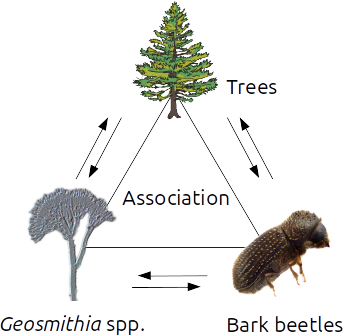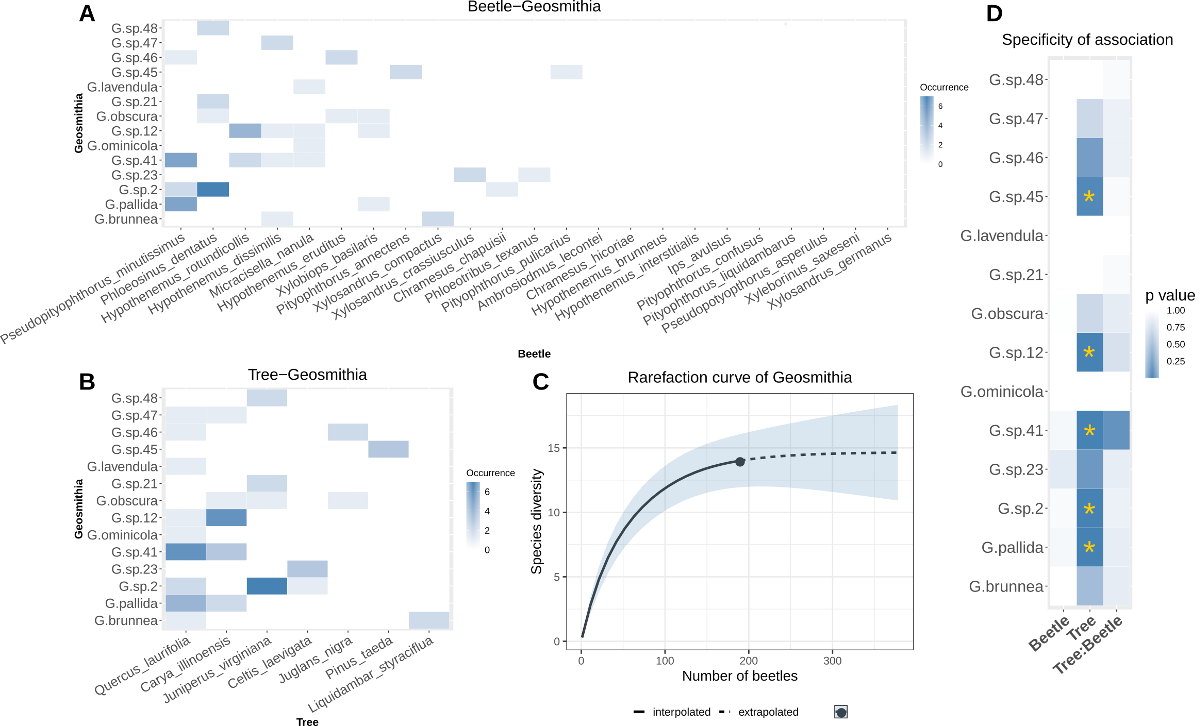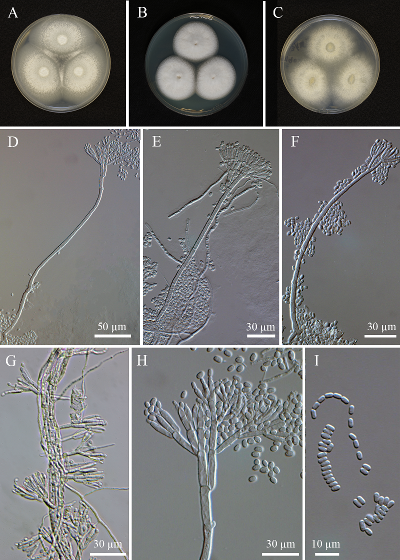Most bark beetles are associated with hundreds, if not thousands, of microbes during their life, often with a few dominant taxa at a time. One of the fungal genus Geosmithia, is globally very diverse and abundant, and dominantes a ubiquitous but under studied niche — the twig-infesting / phloem-feeding bark beetle mycobiome.

Tree, beetle, and fungus, are components affecting the association relationship with each other.
Geosmithia is best known due to one species, G. morbida, which is vectored by the walnut twig beetle (WTB) and contributes to Thousand Cankers Disease (TCD) on walnut and wingnut trees in North America and regions in Europe.
Current knowledge of Geosmithia’s biology and ecology are mostly from surveys in Europe — thanks to a few world-class local experts. We essentially know nothing about their ecology outside the European continent. The Geosmithia communities in other continents are only now beginning to be described. Consequently, I carried out a survey in the Southeast USA, a hotspot of bark beetle diversity, and therefore, of their associated Geosmithia diversity.
I strategically selected nine tree species, including common trees in the region and walnut / walnut-related species. The freshly cut tree branches were deployed as bait for luring bark beetles. I then excised all bark beetles and isolated their associated fungi with a special focus on Geosmithia species, via body wash. The advantage of such a design is that it essentially factorizes trees, beetles, and fungi as variables that allow us to statistically study their association specificities—a breakthrough for the often described complicated relationship of bark beetle microbiome.

Association of Geosmithia species with beetles (A) and trees (B); rarefaction curce shows the species coverage is very high (C); five Geosmithia species are specific to tree species (D). [adapted from Huang et al. (2019)]
I eventually obtained 55 Geosmithia species from 195 beetle specimens from 45 exposed tree branches. There were 14 Geosmithia species were identified, and six of which were new to science. What amazing diversity in the Southeast USA!

A new Geosmithia from the Southeast USA [from Huang et al. (2018)]
Statistically speaking, five Geosmithia species are specific to trees where they collected from, and none were specific to beetle species. This is surprising because beetles are the only mobile agent in the association (tree and fungus are immobile on their own), and are conventionally considered as the affinity determiner.
With the results, we can inform the government agents with the scientific evidence, so that they can make evidence-based decisions regarding disease surveys and the taxpayers’ money will be much well spent!
Reference cited
- Huang Y-T, Skelton J, Johnson AJ, Kolařík M, Hulcr J. Geosmithia species in southeastern USA and their affinity to beetle vectors and tree hosts. Fungal Ecol 2019; 39: 168–183.
- Huang Y-T, Kolařík M, Kasson MT, Hulcr J. Two new Geosmithia species in G. pallida species complex from bark beetles in eastern USA. Mycologia 2018; 109: 790–803.